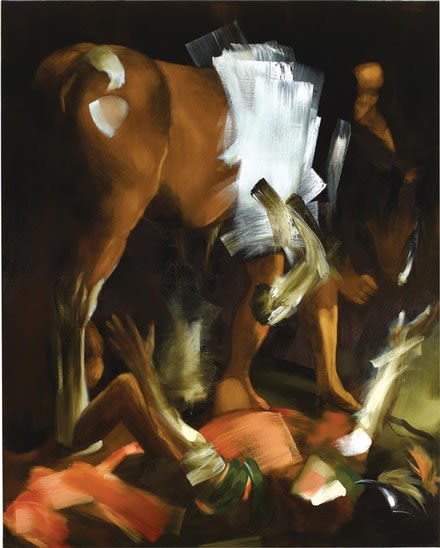Elise Ansel: Time Present
For her title, Elise Ansel snatches a fragment from the first lines of T. S. Eliot's "Burnt Norton," (1936) the first of his Four Quartets: "Time present and time past / Are both perhaps present in time future. / And time future contained in time past." This melding of time is the essence of Ansel's modus operandi: she dissects monuments in the history of painting and transforms their disiecta membra into her own painterly idiom. She embodies Eliot's poem, which takes on a form of irony when applied to her method: "What might have been is an abstraction / Remaining a perpetual possibility / Only in a world of speculation." The verse encapsulates Ansel's analytic gaze into the work of the past not as fixity, but as possibility ("what might have been"); not the meaning a given painting may have had, but an ineffable something she metamorphoses into "an abstraction," which will always be "a perpetual possibility" because it cannot be pinned down.

